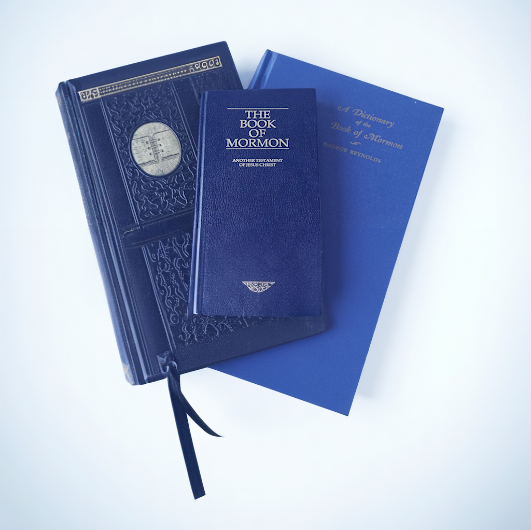
(Image source: BookofMormonCentral.org)
All Aboard the Roller Coaster!
For more than a decade a “war of ideas” has swirled among believing members and critics of the Church of Jesus Christ of Latter-day Saints in relation to a document that has come to be known as the Mormon CES Letter.
A Short Mormon CES Letter Summary
This document was first published online as early as 2012 by former Church member, Jeremy Runnells. The letter reveals Mr. Runnells experienced an internal faith crisis that led him to renounce his membership in the Mormon Church in 2015. A few years prior to leaving the Church, he assembled an 84-page list of questions to a “CES director.” CES stands for “Church Education System.” Simply put, Mr. Runnells’s list of questions were initially intended for an employee of the LDS Church whose career focused on teenagers and adults on matters of LDS doctrine and faith.
Essentially, the LDS CES Letter is a compilation of arguments that have been leveled against the LDS Church dating back to when it was first organized in 1830. It stands as one of the most ambitious collections of arguments attempting to expose what it considers the false tenets of this American-born religion. Few, if any, of the issues addressed are unique to Jeremy Runnells or his letter, more formally titled, “CES Letter – My Search for Answers to my Mormon Doubts.” Its comprehensive nature is perfectly suited to the “worldwide web.” Hence, its appeal and success in that forum.
An All-Too Common Reaction From Believers
Faithful Latter-day Saints often attack the letter on matters of hypocrisy and/or disingenuousness. Although the letter was originally intended for a specific recipient, it was first posted for a much wider online audience and sent only to the CES director to whom it was written months later. The author’s claim that, at the time of the letter’s public release, he was still open to a restoration of his faith, is countered by claims that he, in fact, expressed a complete loss of faith prior to its publication. If true, this would make it less a plea for answers as an expose to undermine the faith of others.
It’s also true that the document has undergone extensive revisions and expansions (it’s presently 138 pages). Rewrites have also, the author admits, strived to soften its combative and snarky tone to enhance its appeal to target readers, namely members of the Church of Jesus Christ of Latter-day Saints who are “on the fence” or uncertain about their convictions.
For all intents and purposes, the LDS CES Letter has caused many Church members to rethink their beliefs and renounce Church membership. The response of some whose testimony remains intact has been to adopt a similar accusatory, defensive, and denunciatory tone, sometimes attacking Jeremy Runnells personally, insulting his intelligence, sincerity, and motivation.
Harnessing Emotions
Some who criticize Mr. Runnell may personally know individuals who have fallen away in consequence of reading the CES Letter. These experiences can be extraordinarily painful. They can damage family bonds and sever friendships. Because of these heightened emotions, it may be understandable that some critics of Mr. Runnell emply much the same caustic and hate-filled rhetoric as they feel characterizes the CES Letter.
Those seeking information about the LDS Church may be hard pressed to find sources totally without bias. Informers generally have a personal stake in how their information is interpreted. Mr. Runnells is no different. In its latest iteration, the letter leaves no doubt what side he is on. Readers would be foolish to think this document will somehow buttress their belief in LDS doctrine when its clear intent is just the opposite.
As already mentioned, none of the issues described in the CES letter are new, although they may be new to individual readers. Those who seek an informed and critical CES Letter summary highlighting where Jeremy Runnell gets it wrong, knowingly or unknowingly, have many online resources to choose from. Some resources explore each and every exhaustively. Prepare yourself for a lot of reading. Interested persons will quickly realize that it often takes considerably more effort and energy to explain an issue than it does to pose it.
Advice From a General Authority
A better strategy may be the one presented by Elder Lawrence E. Corbridge in his BYU address entitled, “Stand Forever.” Elder Corbridge states:
“Begin by answering the primary questions. There are primary questions and there are secondary questions. Answer the primary questions first. Not all questions are equal and not all truths are equal. The primary questions are the most important. Everything else is subordinate . . . I will mention four of them.
1. Is there a God who is our Father?
2. Is Jesus Christ the Son of God, the Savior of the world?
3. Was Joseph Smith a prophet?
4. Is The Church of Jesus Christ of Latter-day Saints the kingdom of God on the earth?
By contrast, the secondary questions are unending. They include questions about Church history, polygamy, people of African descent and the priesthood, women and the priesthood, how the Book of Mormon was translated, the Pearl of Great Price, DNA and the Book of Mormon, gay marriage, the different accounts of the First Vision, and on and on.
If you answer the primary questions, the secondary questions get answered too, or they pale in significance and you can deal with things you understand and things you don’t and things you agree with and things you don’t without jumping ship altogether.”
Additional Resources
Anyone wanting to delve into deep and/or controversial questions related to LDS theology and history are encouraged to check out the Church’s new volumes of history entitled Saints, the Encyclopedia of Mormonism, the Joseph Smith Papers Project, Scripture Central, FAIR, the Interpreter Foundation, and others.
Many hundreds of claims are presented in the CES Letter. As a result, whether intentional or not, the letter is bound to overwhelm readers with a deluge of negativity that may create a sense of panic. Some things in the CES Letter are absolutely true. Other information is patently false and may represent misinterpretations–or incomplete representations–of the data. Within the CES Letter itself is the call for readers to do their own research. This is good advice and ought to be diligently and heartily received.
History is often a complex, messy thing. Every religion seems to have its share of controversies that can be reasonably interpreted in different ways. Those who abandon their beliefs in a particular denomination are sometimes faced with questions that lead them to abandon Christianity altogether. Such seems to be the case with Jeremy Runnell. After leaving Mormonism, he initially joined a nondenominational Christian church. Finally, he became disenchanted with all things Christian and presently claims to be “agnostic atheist.”
Final Word of Advice
It should be understood that not everyone who struggles with belief or abandons their faith is necessarily a bad or evil person. Not everyone who apostatizes from the LDS Church does so out of a hedonistic desire to embrace every sin once denied.
Even if Church members have felt personally attacked, mocked, and demonized for their beliefs, they are never justified in treating others with equivalent disrespect. Followers of Christ are admonished to remember His commandments to “turn the other cheek” and to love our enemies even as ourselves. This isn’t easy. In fact, it may be one of the most difficult Christian tenets to embrace. Still, those who can internalize and act according to the Savior’s injunctions are promised rewards of peace, happiness, and spiritual comfort in this life and in the one to come.

By Todd Noall, Source Expert
Todd Noall is an author and religious scholar at Mormonism Explained with a focus on the history and theology of religion.

Fact Checked by Mr. Kevin Prince, Source Expert
Kevin Prince is a religious scholar and host of the Gospel Learning Youtube channel. His channel has garnered over 41,000 subscribers and accumulated over 4.5 million views. Mr. Prince also created the Gospel Learning App, a reliable platform where individuals seeking truth can access trustworthy answers to religious questions from top educators worldwide.
About Mormonism Explained
Mormonism Explained is a resource that was designed to provide objective and factual information about Mormonism, its history, doctrines, and policies. Our team of researchers consults experts and primary sources to present factual information on a variety of topics relevant to the Mormon Church.
Tags
